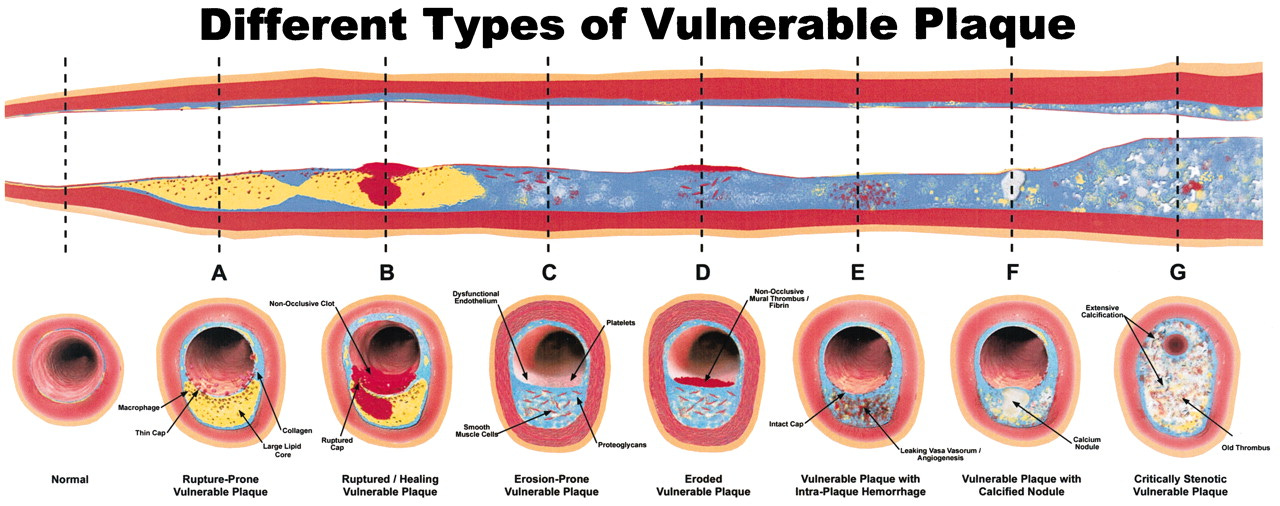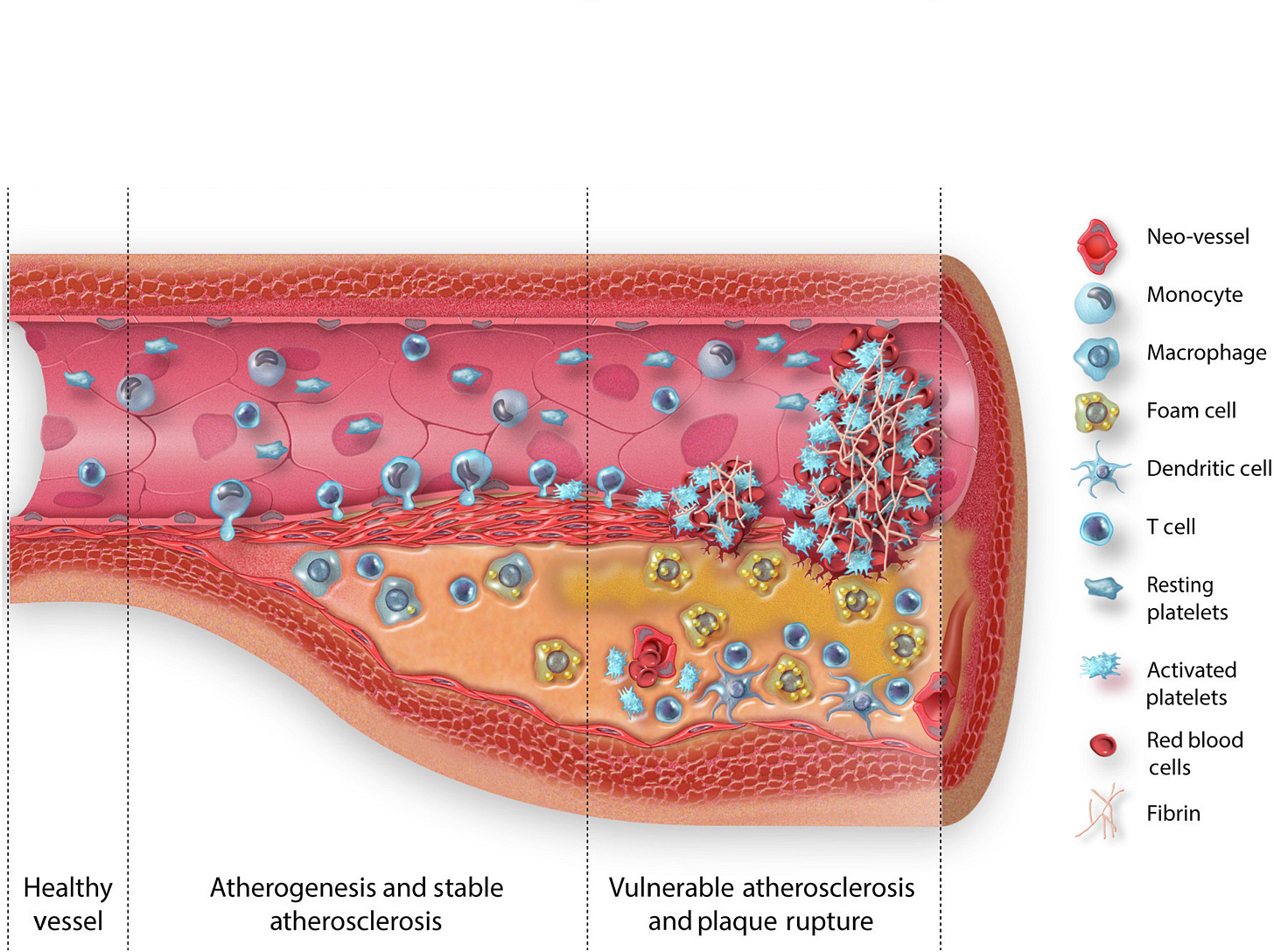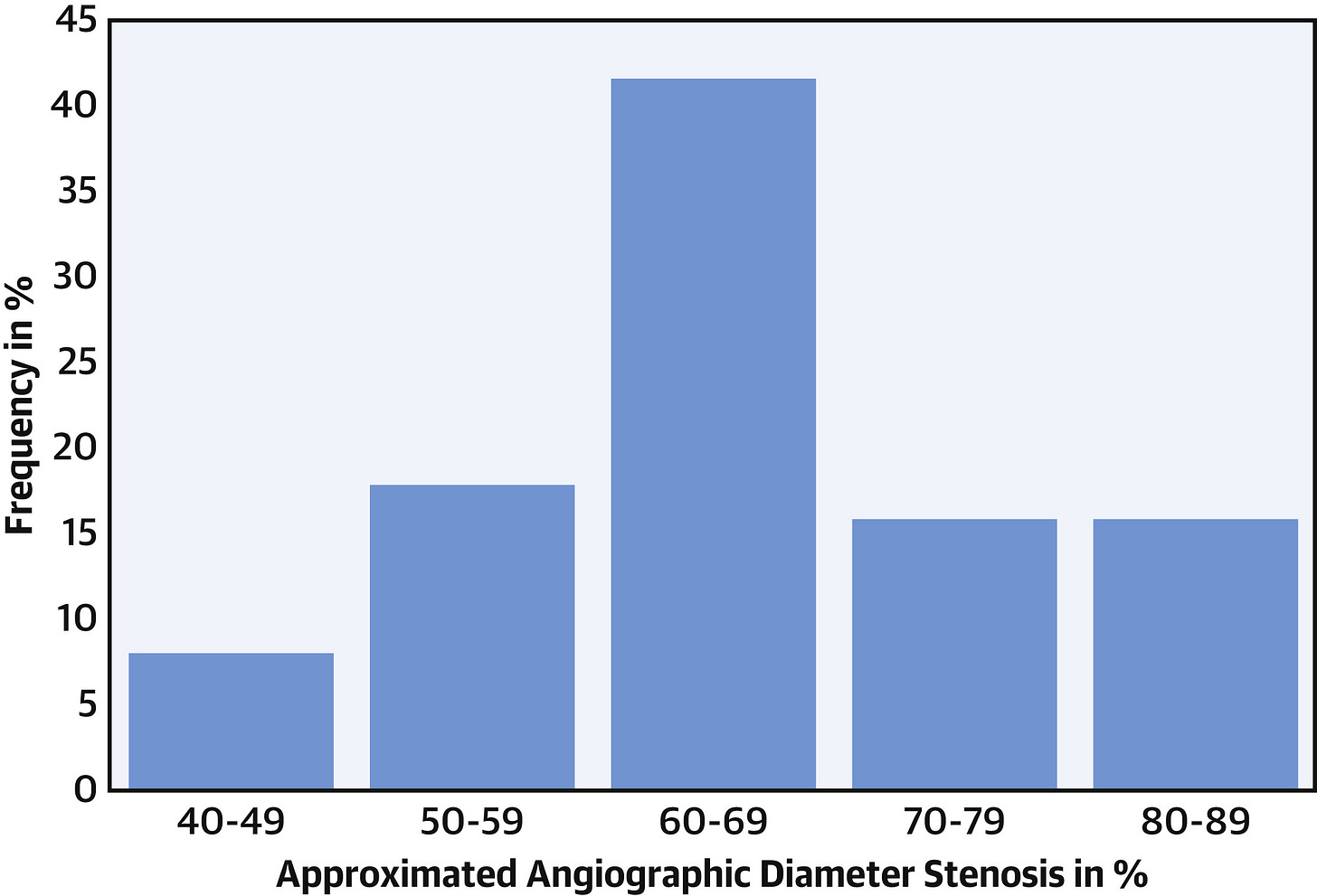Why Heart Attacks Happen Without Warning

We’ve all heard this story.
A person goes for a stress test to ‘check their heart’ and is told they ‘passed with flying colours’.
The following week they have a heart attack.
How is this possible?

Did the doctor miss something?
The short answer is no.
But you need to understand what the test was actually looking for to understand why.
It’s likely nothing was missed, and if you understand how heart attacks really happen, then it all makes sense.
Firstly, there is a misconception that a heart attack occurs when plaque in the artery progressively builds up to a point where it finally blocks off. Think narrower, narrower, narrower, then finally blocked.
Hey, presto. A heart attack.
That is not how a heart attack happens.
We must understand that a heart attack is when the artery is blocked by a clot that forms suddenly in the vessel.
This clot forms when a ‘vulnerable plaque’ in the artery ruptures. The vessel then goes from ‘open’ to ‘closed’ very quickly.
The clot forms in a similar way to when you cut your skin. The undersurface is exposed. Then a clot forms.
Except, a clot on your skin does not end up blocking the blood supply to a critical organ—i.e. your heart.
I have previously discussed how atherosclerosis, or plaque in the artery, builds up even from a very early age.
Autopsies of soldiers in their 20s who died in combat during the Korean War showed that 77% already had some plaque in their arteries1.

On the other end of the spectrum, most 80-year-olds have evidence of advanced plaque in their coronary arteries2. So for almost everyone, plaque is building up in their coronary arteries starting from a young age, and by the later decades of life, there is likely to be a significant amount of it.
Over time, the small plaque deposits in the artery wall can progress and cause narrowing of the artery3.

This narrowing of the artery is what most people are concerned about. The idea that the artery is ‘90% blocked’ or ‘hanging on by a thread’.
This is not as important as people think.
It’s not to say that it does not matter. But it probably matters less than you think.
When someone says that they were ‘about to have a heart attack’ because an artery was very narrowed, that is not exactly true.
Let me explain.
The yellow area in the graphic shown above is called a ‘Thin Cap Fibroatheroma’ or TCFA. In terms of vessel narrowing, it is not severe. It is, in fact relatively mild.
However, as the image illustrates, it can rupture, causing a clot to form and in some individuals, it will be big enough to block off the artery and cause a heart attack.

We now must go back to our patient who had the normal stress test and had a subsequent heart attack.
A stress test aims to identify individuals likely to have severe coronary artery narrowing. During progressively higher levels of exercise, if the person experiences chest pain or has changes on their ECG tracings that are abnormal, then the test is considered positive.
The key point is that the test looks for severely narrowed arteries.
It is not looking for the presence or absence of plaque in the artery.
It is not looking for ‘vulnerable’ plaques that might rupture and cause a heart attack.
It is not looking for mild or moderately narrowed plaques in the artery that could rupture and cause a heart attack.
And as we have seen above, the plaque that causes a heart attack is not always from a severely narrowed plaque4. A plaque of greater than 70% is typically considered ‘severe’.
Most heart attacks that lead to sudden cardiac death result from plaques that are less than 70% narrowed5.

Exercise stress tests are designed to detect severely narrowed coronary arteries, and if the majority of heart attacks result from plaques that are not severe, you can see the problem.
It is possible to have a normal stress test but still have plaque in your coronary arteries that could lead to a heart attack.
The fact that someone has a heart attack the week after a normal stress test is just down to chance and bad luck.
The Myth Of The Vulnerable Plaque
Understanding that heart attacks result from the rupture of a vulnerable plaque is key to understanding heart disease. It also set in motion a considerable research effort to identify these plaques and possibly treat them with a stent, for example. The holy grail of heart attack prevention was to find these small areas of vulnerability and aggressively treat them.
All of this makes perfect sense.
But as one of my favourite astrophysicists likes to say:
“The world is under no obligation to make sense to you”
The assumption made is that there are two types of plaque:
Vulnerable
And
Stable - (Thick Cap/Fibrotic)
Ie stable and therefore less likely to rupture and cause a heart attack.
If we focus on the vulnerable plaques alone, we should be just fine.
Right?
Not really.
The problem is that these vulnerable plaques can change type. Evidence suggests that 75% of vulnerable plaques change into more stable plaques over time6.

Importantly for plaques of over 50% narrowing, most have already had at least one previous plaque rupture. Indicating that many plaque ruptures are silent and do not cause a heart attack but lead to progressive narrowing of the artery7.
In reality, we should focus less on the vulnerability of single plaques and more on the patient as a whole and the vulnerability of the entire vascular system. Atherosclerosis and the vulnerability of plaque is more of a systemic issue than a local one, and the solutions need to be systemic rather than local.
The Vulnerable Patient
To assess the vulnerability of a patient, we must then recognise that simply assessing for a single severely narrowed artery is not the best test to assess risk.
We must rely more on biological risk markers, including blood pressure, cholesterol, smoking, diabetes, abdominal obesity, exercise, etc.
Think of these as markers of your ‘real’ stress test. Getting on the right side of these constitutes ‘passing with flying colours’, not doing well on a stress test.
So the next time you hear the story of someone having a heart attack after a stress test, you know the real reason.
It wasn’t because the stress test missed something, but they were a ‘vulnerable patient’ with ‘vulnerable plaque’.
Now it’s time to ask how ‘vulnerable’ you are.
CORONARY DISEASE AMONG UNITED STATES SOLDIERS KILLED IN ACTION IN KOREA: PRELIMINARY REPORT. JAMA. 1953;152(12):1090–1093.
Coronary artery calcium for the prediction of mortality in young adults <45 years old and elderly adults >75 years old. Eur Heart J. 2012 Dec;33(23):2955-62.
From vulnerable plaque to vulnerable patient: a call for new definitions and risk assessment strategies: Part I. Circulation. 2003 Oct 7;108(14):1664-72.
The myth of the "vulnerable plaque": transitioning from a focus on individual lesions to atherosclerotic disease burden for coronary artery disease risk assessment. J Am Coll Cardiol. 2015 Mar 3;65(8):846-855.
From Detecting the Vulnerable Plaque to Managing the Vulnerable Patient: JACC State-of-the-Art Review. J Am Coll Cardiol. 2019 Sep 24;74(12):1582-1593.
The myth of the "vulnerable plaque": transitioning from a focus on individual lesions to atherosclerotic disease burden for coronary artery disease risk assessment. J Am Coll Cardiol. 2015 Mar 3;65(8):846-855.
The myth of the "vulnerable plaque": transitioning from a focus on individual lesions to atherosclerotic disease burden for coronary artery disease risk assessment. J Am Coll Cardiol. 2015 Mar 3;65(8):846-855.




